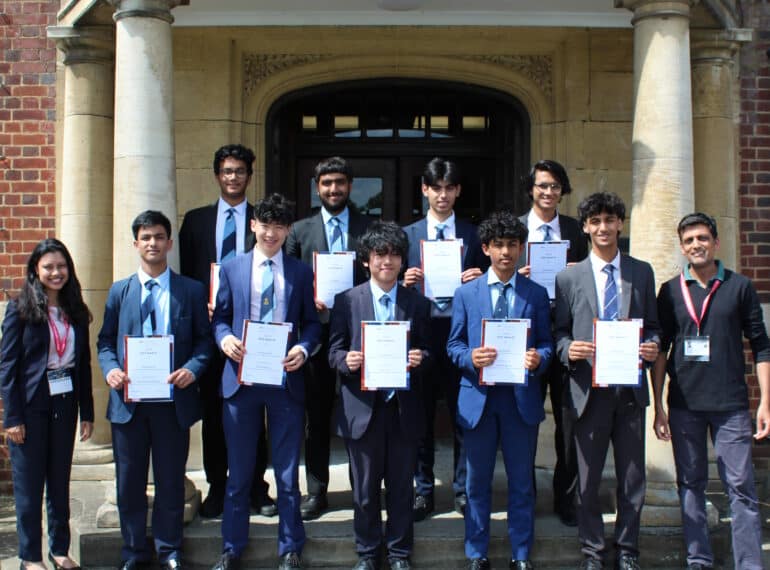
Ten pupils from Year 12 received special bursary awards from a philanthropic foundation set up by Old Elizabethan Priyan Shah’s family.
The DVS Awards recognise qualities such as humility, resilience, leadership and reliability. Participating schools are asked to nominate the award-winners, with the nomination process involving both teachers and classmates. QE has partnered with the DVS Foundation over the past three years.
Headmaster Neil Enright said: “Priyan and his family are passionate about supporting educational initiatives and about seeking to celebrate those whose contribution might not otherwise be recognised. Their emphasis on encouraging positive personal qualities and character attributes aligns very well with the School’s own mission to produce young men who are confident, able and responsible.
“By allowing students to nominate their peers for an award, the scheme encourages Year 12 pupils themselves to recognise and affirm positive examples from among their own year group.”
As well as participating in the awards scheme, the School has also run the foundation’s WhyOhYou personal development programme. In addition, the foundation has facilitated work experience for QE pupils.
The DVS Foundation was set up in 2012 by Priyan’s parents, Dhiru and Rami. Education is one of its major areas of focus, together with food insecurity and healthcare, both in the UK and East Africa. The family business is a company specialising in UK institutional real estate investment.
In launching the DVS Awards in 2021, the foundation stated its belief that “success should not only be centred around academic achievements”. The ten categories are determined by the schools, with Year 12 chosen since this age “marks a pivotal transition into adulthood”.
Each winner of a DVS Award received a certificate and a £100 gift voucher in an end-of-year assembly. Priyan (OE 1991–1998) visited the School to present the awards. The recipients and the categories for which they won are listed below, together with their citations.
- Commitment: Luc Tran – Nominated by the Art department “for his exceptional commitment to the space and place art project. Despite his educational travel commitments, Luc demonstrated remarkable dedication by not only completing the project to high standards but also undertaking an extension task. His last presentation, which included sketches, photography, and the final outcome, was comprehensive and detailed, showcasing a thorough explanation of his theme. Luc’s ability to balance his travels with his project work exemplifies his outstanding work ethic and passion for art.”
- Environmental Stewardship: Suhruth Tadvai – Suhruth has volunteered at a cow shed since December in Year 11, going once a week to help clean up and look after the cows; this is connected to Hinduism, in which looking after cows is important, as they are sacred.
- Humility: Zain Farooqi – Nominated by a number of his peers as someone who quietly but consistently helps his friends, be it through academic studies or when playing football.
- Independence: Rocco Giustiniani – Recognised by several of his peers for working exceptionally hard at school, whilst maintaining a rigorous schedule of competitive swimming outside of school.
- Kindness: Rushil Akula – Nominated by a number of peers as someone who consistently demonstrates kindness to others. One student said he’s “always treating people with respect and is always willing to help other out”.
- Leadership: Chanakya Seetharam, who is the 2024 School Captain. A huge number of students recognised Chanakya’s leadership skills. Not only does he complete his responsibilities as School Captain very well, but he’s recognised as someone who leads from the front, demonstrates excellence and is very dependable.
- Reliability: Rohan Varia – A hard-working, dedicated student, Rohan has been recognised for being on time, completing tasks well and impressing his teachers.
- Resilience: Pranav Nadendla – Also a hard-working, dedicated student, Pranav has achieved this while overcoming several significant personal challenges.
- Respect: Haris Shahid – Nominated by a number of his peers, with this nomination summing up what they all felt: “I cannot think of a single time that anyone I have met has ever had anything bad to ever say about him, and he is known and respected by all students. Few, if any students will ever say that he has ever offended them.”
- Selflessness: David Wang – David has been recognised for working exceptionally hard as a Senior Prefect Sector leader. He does this incredibly well and diligently, often when it’s not convenient for him to do so. The School benefits enormously from his care and conscientiousness.

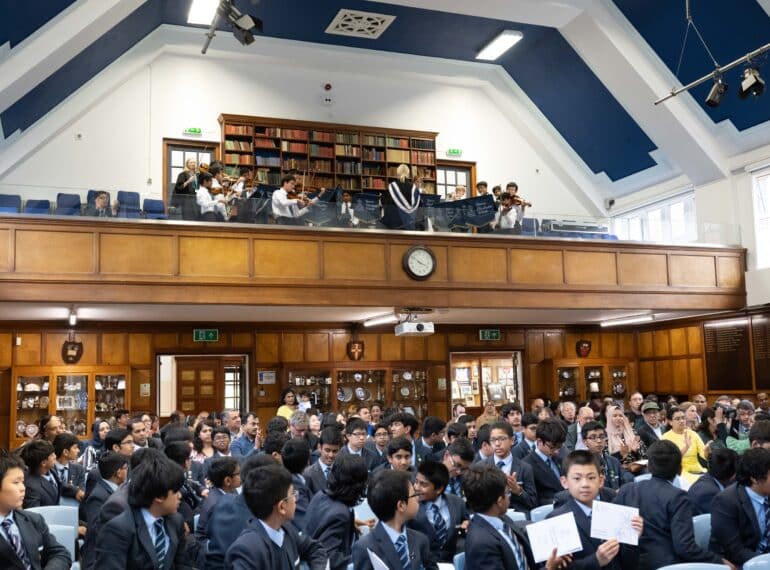

 They timed their visits to coincide with School Diversity Week, which QE was celebrating in partnership with LGBT+ young people’s charity, Just Like Us.
They timed their visits to coincide with School Diversity Week, which QE was celebrating in partnership with LGBT+ young people’s charity, Just Like Us. Also in the presentation a written explanation of the terms represented by the initials LGBTQIA+, while the same slide showed the flags associated with the movement, including, for example, flags for ‘Agender’, ‘Asexual’ and ‘Genderqueer’, as well as the Pride flag itself.
Also in the presentation a written explanation of the terms represented by the initials LGBTQIA+, while the same slide showed the flags associated with the movement, including, for example, flags for ‘Agender’, ‘Asexual’ and ‘Genderqueer’, as well as the Pride flag itself. The presentation also featured Akshay Shah’s winning entry in a Pride-themed computer desktop design competition. Akshay, whose colourful design is pictured, said: “Each strand represents a different gender/sexuality. They are made up of organic swirly shapes, which represents the flexible nature of Pride.” Akshay, of Year 9, depicted not only the colours of the Pride flag but also, on the white strands, “lesser-known genders/sexualities” including gynesexual, homoromantic, demiromantic, genderflux and skoliosexual.
The presentation also featured Akshay Shah’s winning entry in a Pride-themed computer desktop design competition. Akshay, whose colourful design is pictured, said: “Each strand represents a different gender/sexuality. They are made up of organic swirly shapes, which represents the flexible nature of Pride.” Akshay, of Year 9, depicted not only the colours of the Pride flag but also, on the white strands, “lesser-known genders/sexualities” including gynesexual, homoromantic, demiromantic, genderflux and skoliosexual.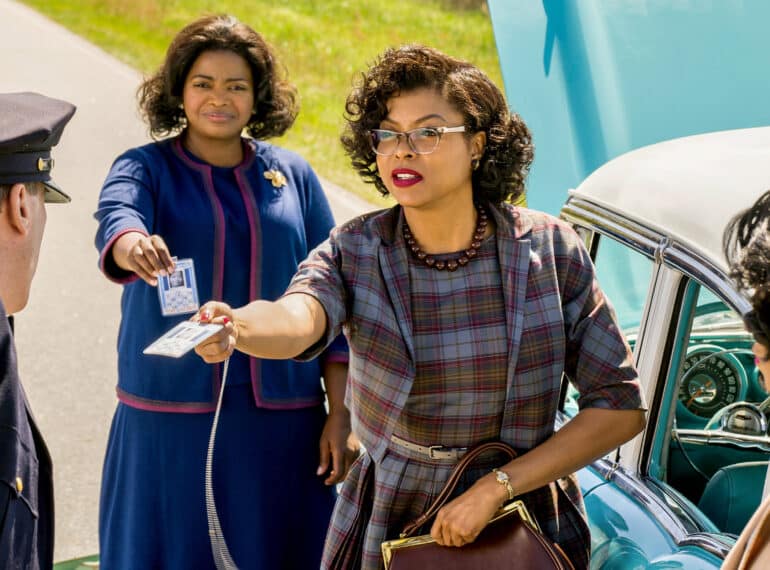
 In between these highlights, regular pastoral sessions and a special afternoon were devoted to a project looking at race, intersectionality and women in science ahead of seeing the film, Hidden Figures.
In between these highlights, regular pastoral sessions and a special afternoon were devoted to a project looking at race, intersectionality and women in science ahead of seeing the film, Hidden Figures. The boys’ project involved completing a PowerPoint presentation designed to teach them about topics such as the origins, causes and effects of the Cold War and about the Civil Rights Movement in the US.
The boys’ project involved completing a PowerPoint presentation designed to teach them about topics such as the origins, causes and effects of the Cold War and about the Civil Rights Movement in the US.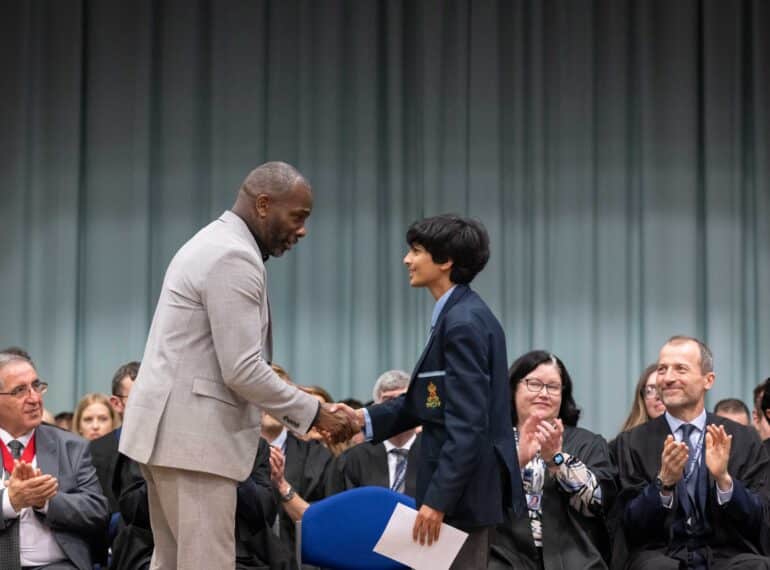

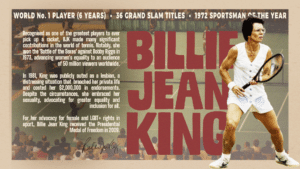 2023’s School Captain, Darren Lee, led the way in a competition to design computer desktops with his winning images of two American icons of LGBT rights, tennis legend Billie Jean King and ‘first trans celebrity’ Christine Jorgensen.
2023’s School Captain, Darren Lee, led the way in a competition to design computer desktops with his winning images of two American icons of LGBT rights, tennis legend Billie Jean King and ‘first trans celebrity’ Christine Jorgensen.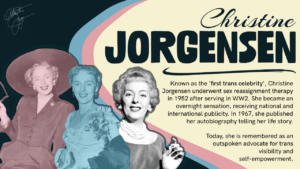 “To this end, we are in the process of auditing our curriculum across the whole School to assess how it is aligned with our vision for a broad, balanced and inclusive curriculum. This involves ensuring that diversity is celebrated and that there is positive representation.”
“To this end, we are in the process of auditing our curriculum across the whole School to assess how it is aligned with our vision for a broad, balanced and inclusive curriculum. This involves ensuring that diversity is celebrated and that there is positive representation.” Other activities during the month included:
Other activities during the month included: